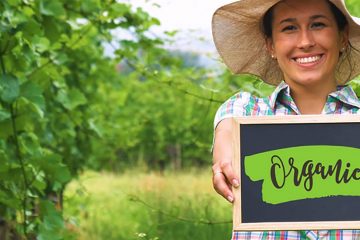If you were to imagine what a wine cellar looks like, what picture comes into your mind? Dusty old bottles? Sure. Big tanks, maybe of concrete or steel? Of course. One image that everybody has, and very few really understand, is that of the oak barrel. What is the oak barrel for, where does it come from? Let’s break it down a little to understand the situation better.
Making oak barrels
Oak barrels for wine (and other uses) are made by a craftsman known as a “cooper”. The cooper may work alone or as part of a team, at a “cooperage”. The cooperage may be a large operation such as Tonnelerie Nadalie in Bordeaux, or may be a small workshop with a single cooper. Such small workshops exist at a small number of prestigious Bordeaux wineries including Château Haut-Brion and Château Smith Haut Lafitte. Making a barrel looks very simple, though is highly skilled work.
Types of oak
Oak trees grow in many parts of the world. When it comes to wine, the two most popular producing countries are France and the United States of America. French oak can broadly be typified as imparting relatively subtle flavours onto the wine inside, with spiciness and some silken textures quite typical. By contrast, American oak tends to be bolder and give stronger flavours, typically of coconut and vanilla. A third country to watch is Hungary. Hungarian oak is of interest to wine producers as its characteristics are very similar to French oak, though it is considerably less expensive.
Old oak and new oak
Go visit enough wineries or read some wine technical sheets and you will invariably hear about “new oak” and “old oak” or “2-year-old oak” and so on. This terminology refers to the amount of times that the particular oak barrel has been used. New oak – sometimes called virgin oak – will not have been used before. It will impart a huge amount of flavour upon the wine that ages there. Anything older than this is no longer new oak, and will impart less and less flavour with each successive use.
Oak barrel fermentation
Without getting into microbiology, let’s just say that the process of converting grape sugars into alcohol is called “alcoholic fermentation”. For some wines, such as the fine red wines of Bordeaux, there will be a secondary fermentation called “malolactic fermentation”. This process converts malic acid to lactic acid, giving the wine a smoother, creamier taste.
Try a barrel-fermented white wine like Enate Chardonnay Barrel Fermented 2010 to see if you can taste the difference.
Oak barrel ageing
Ageing wine in oak barrels is very popular in France and the USA, among many others, though it is perhaps Spain and the wines of Rioja that are most closely associated with oak barrel ageing. Leaving wine to age in oak barrels allows the wine time to settle and mature, to lose its sediment and for its flavours to open up and expand. Oak allows a subtle exchange of air with the wine that facilitates this, without risking oxidation which could spoil the wine. In addition, as the wine interacts with the oak barrel – particularly when it’s new oak, it will take on additional flavour characteristics such as vanilla, spice and coconut. All of this leads to a more complex and structured wine.
Oak barrel ageing is expensive, so wines that have been aged in this way will usually cost more. However, on the plus side, they will usually be tastier and more complex wines that have the potential to last you longer and give full flavours. Try a Rioja Gran Reserva such as Faustino I to get a sense of what oak ageing can add to a wine.
Read more about oak barrel use in wine with this WineFolly article.
[cta_generico id=2599]


